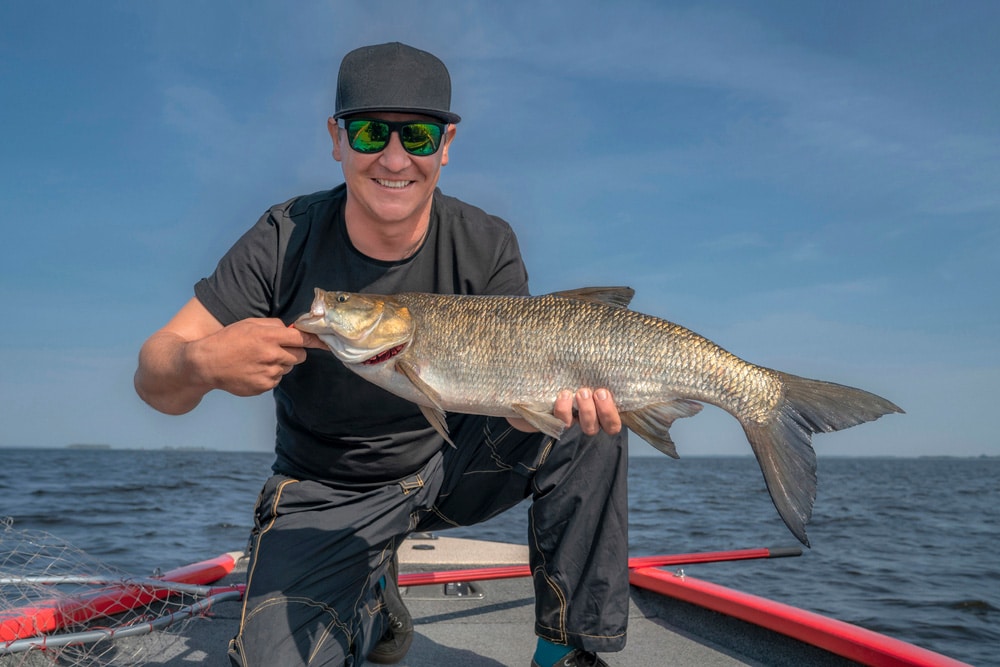
Lake Okeechobee fishing weather plays a huge role in the success of anglers chasing trophy bass. From seasonal shifts to sudden storms, each change in the skies impacts the way fish feed and move. For those who head out on this massive Florida lake, learning how different weather conditions affect bass behavior can make the difference between an average trip and an unforgettable one.
The Role of Temperature
Temperature is one of the biggest factors in bass activity. On Lake Okeechobee, warm water speeds up metabolism and makes bass more aggressive. Cooler water slows them down and often pushes them deeper into cover. Anglers notice that during the early mornings when the water is cooler, bass may be less active near the surface. As the sun rises and warms the shallows, the bite often improves.
Seasonal swings in temperature also influence spawning. In late winter and early spring, when water temperatures reach the mid-60s, bass move into shallow areas to spawn. This period often draws anglers from across the country because it’s prime time for big catches. During hot summer months, fish retreat to shaded cover or deeper water, making the fishing more challenging but not impossible.
How Wind Impacts Fishing
Wind on Lake Okeechobee can either help or hurt. A light breeze can push baitfish toward shorelines and attract bass. Strong winds, however, stir up the shallow water and reduce visibility. For anglers, wind also changes where and how they fish. Calm days allow for precise casts into grass beds or lily pads. On windy days, it’s better to look for sheltered areas like canals or protected coves.
Wind direction also matters. A steady east or west wind often pushes fish to predictable spots, while sudden shifts can scatter them. Many locals watch wind forecasts closely before heading out, as it often determines which parts of the lake will be most productive.
The Effect of Rain and Storms
Rain can be both a friend and a foe. Light rain cools the surface, adds oxygen to the water, and often sparks a feeding frenzy. Bass may chase baitfish more aggressively during these conditions. Heavy downpours or thunderstorms, on the other hand, can shut the bite down completely. Safety is also a concern, as storms can roll in fast across the wide, open waters of Lake Okeechobee.
Cloud cover plays a role, too. Overcast skies reduce light penetration, making bass more likely to roam out of cover. This can give anglers more opportunities to catch fish in open water. Bright, clear skies usually push bass tighter into vegetation or shaded spots, requiring more accurate casts and a slower presentation.
Seasonal Patterns on the Lake
Seasonal changes influence bass activity more than any other factor. In the spring, spawning draws bass into the shallows where they can be sight-fished along grassy flats and sheltered bays. This is one of the best times for anglers to catch large female bass. During the hot summer months, bass often hide in thick cover or retreat into deeper channels to escape the heat. Fishing can still be productive, but patience and precision become more important.
Fall brings cooling waters that spark renewed feeding. Bass take advantage of baitfish schools moving along the shorelines. Many anglers find this season less crowded, giving them more access to prime spots. Winter cools the lake but does not shut the fishing down. Bass still feed, especially during mid-day when the water is warmest.
Barometric Pressure and Its Effects
Barometric pressure is another factor that shifts bass behavior. Falling pressure before a storm often increases feeding activity. Bass sense the change and take advantage of the opportunity to eat before conditions worsen. Rising pressure after a storm usually slows the bite. During stable, high-pressure periods, bass can be more predictable, but they may stay tight to cover and be less aggressive.
Tips for Adjusting Tactics
Adapting to weather is what separates good trips from great ones. On calm sunny days, casting into shaded vegetation with slower-moving baits works well. During windy or rainy conditions, using louder lures or faster retrieves helps bass locate the bait. Cloudy skies allow more freedom to fish open water, while clear skies make it better to focus on heavy cover.
How We Can Help
At Roland Martin Marina & Resort, we understand how the weather shapes every fishing trip. Our guides live and breathe Lake Okeechobee, and they know how to adapt to shifting conditions. We also have boat rentals, a fully stocked marine center, and comfortable lodging for any stay. By staying with us, you gain both convenience and the knowledge of experienced locals who have spent decades studying the lake.
Plan Your Trip
Fishing success often comes down to timing your visit with the right conditions and having the right support. Our team helps you get the most from every trip, rain or shine. Ready to plan your Lake Okeechobee adventure? Contact us today to book your stay and fishing experience.
